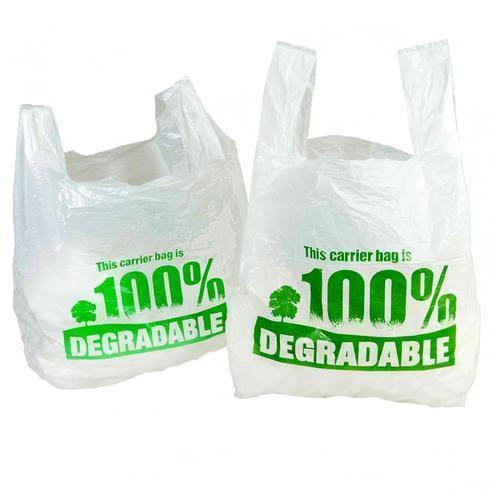The Plastic Predicament
The proliferation of plastic pollution has emerged as one of the most pressing environmental challenges of our time. Single-use plastics, in particular, have come under scrutiny for their significant contribution to pollution in oceans, landfills, and ecosystems worldwide. In response to growing concerns, the search for alternative materials has intensified, leading to the development of degradable plastic bags as a potential solution to mitigate the environmental impact of traditional plastics.
Understanding Degradable Plastic Bags
Degradable plastic bags, also known as biodegradable or compostable bags, are engineered to break down into harmless components under specific environmental conditions. Unlike conventional plastics that persist in the environment for centuries, degradable bags offer the promise of accelerated decomposition, potentially reducing their ecological footprint. This characteristic has garnered attention from industries seeking more sustainable packaging solutions.These bags typically undergo degradation through various mechanisms, including biodegradation, photodegradation, and oxo-degradation. Biodegradable plastics are intended to be broken down by microorganisms into simpler compounds, while photodegradable plastics degrade when exposed to sunlight, and oxo-degradable plastics fragment into smaller pieces through oxidation.
The Promise of Degradable Plastic Bags
Proponents of degradable plastic bags highlight their potential to alleviate the burden of plastic pollution by facilitating a more rapid degradation process. These bags can disintegrate into natural elements such as water, carbon dioxide, and biomass, often within a shorter timeframe compared to traditional plastics. This quality makes them appealing for various applications, including shopping bags, food packaging, and agricultural purposes.
Debunking Common Misconceptions
Despite the appeal of degradable plastic bags, misconceptions abound regarding their efficacy and environmental impact. One common misconception is that all degradable bags are inherently eco-friendly. In reality, the degradation process can vary depending on factors such as temperature, humidity, and the presence of microorganisms, raising questions about their reliability in real-world scenarios.Furthermore, some degradable plastics claim to leave behind fewer harmful residues, further minimizing environmental harm.
Environmental Concerns and Controversies
Environmental experts and researchers have raised concerns about the potential drawbacks of degradable plastic bags. One primary concern is the fragmentation of these bags into microplastics, which can persist in the environment and pose risks to ecosystems and human health. Additionally, the lack of standardized regulations and labeling standards has led to confusion among consumers, undermining efforts to promote truly sustainable alternatives.
Regulatory Challenges and Consumer Confusion
The absence of comprehensive regulations governing degradable plastic bags has compounded the issue of consumer confusion. In many cases, consumers may mistakenly assume that all degradable bags are equally environmentally friendly, overlooking the complexities of the degradation process and the conditions required for effective decomposition. This lack of clarity underscores the need for standardized labeling and regulatory frameworks to guide consumers and promote transparency within the industry.
The Lifecycle Analysis: Evaluating Environmental Impact
While degradable plastic bags offer the potential for accelerated degradation, their overall environmental impact extends beyond disposal. The production process of these bags still requires resources and energy, contributing to carbon emissions and other forms of pollution. Moreover, the end-of-life management of degradable bags, including composting and recycling infrastructure, presents logistical challenges that must be addressed to realize their full environmental benefits.Furthermore, some degradable plastics claim to leave behind fewer harmful residues, further minimizing environmental harm.
Toward a Sustainable Solution: Beyond Degradable Plastic Bags
While degradable plastic bags may offer a temporary solution to plastic pollution, they are not a panacea. A comprehensive approach to sustainability requires addressing the root causes of plastic pollution through reduction, reuse, recycling, and innovation in materials design. Efforts should focus on developing circular economy models that minimize waste and promote the responsible use of resources, ultimately leading to a more sustainable future for generations to come. If you want to know more information about customized cereal box visit TopUSAPackaging
Conclusion: Navigating the Complexities of Plastic Pollution
In conclusion, the adoption of degradable plastic bags should be approached with caution, recognizing both their potential benefits and limitations. While these bags may offer a step towards reducing the environmental impact of single-use plastics, they are not without challenges. Moving forward, it is essential to prioritize comprehensive strategies that encompass the entire lifecycle of products, from production to disposal, to effectively address the complex issue of plastic pollution and pave the way for a more sustainable future.











